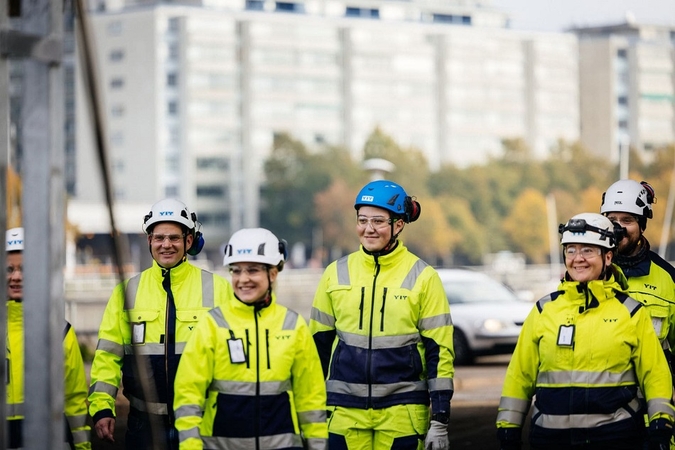Over the next few years, Denmark will record the biggest boom of port development in the history of the kingdom.
Ports are Managed by Communes
President of the Association of Danish Industry Ufe Steiner Jensen said that within five years, the overall area of the ports will increase by 50 percent.
Denmark has more than 120 commercial sea ports, ranging from fishing ports to ferry terminals and big commercial ports. The numbers look even more impressive when comparing some 43 thousand square kilometers area of Denmark to 65 thousand square kilometers area of Lithuania.
The realization comes: with the only commercial port of Klaipeda and Butinge oil terminal we look like dwarfs.
During its long history, Danish cities have developed along with its ports. Therefore, most of the ports in Denmark are managed by the local government - the communes.
Several ports are completely private, with an exception of the joint port of Copenhagen and the Swedish port of Malmo, managed by the company registered in Sweden. Part of its stock is owned by private investors, but both Copenhagen and Malmo municipalities have their shares as well.
Strengthening its Position
Danish port development is encouraged by the fact that 75 per cent of the country's foreign trade is conducted in these ports. In terms of population (5.5 million), Denmark is bigger than Lithuania (about 3 million).
U.S.Jensen emphasized that based on the maritime sector positions, including shipping, marine services and industries, Denmark is one of the leading countries in the world.
At least in Europe, the Danish companies are in the lead in running the biggest share of ferry market and the construction of offshore wind farms. Danish “Maersk” group takes hold in the global container shipping market as well.
Denmark is also improving its position in the fields of cruise shipping and offshore oil extraction. However, due to the concentration of the industry in Southeast Asia, Denmark has suffered losses in the shipbuilding market.
Selling off Territories
Pronounced growth of new port areas, according to U.S.Jensen, has been resulted by the fact that the industrial ports are being moved from urban centers.
Similarly to the Netherlands, Denmark develops new ports by building new territories in the water.
According to U.S.Jensen, one of the major catalysts in Danish port development has been the building and sales of new territories. By the year 2015, it is planned to build and sell around 650 thousand square meters of port lands.
Another positive tendency is the fact that Denmark does not attempt to invest in several larger ports. Instead, it promotes the development of smaller ports. This ensures more jobs in different regions. Local people find the near-by expanding ports more welcoming.
Danish ports also encourage the development of different businesses, such as storage, handling, as well as other businesses that are remote to port activities: wind farms, biomass, yeast, and bio-ethanol factories.
Denmark's largest ports
|
Port
|
Size/ha |
Further development/ha |
Maximum depth |
Handling mln.t in 2009 |
Port companies |
|
Esbjerg |
370 |
105 |
11,5 |
3,7 |
270 |
|
Fredericia |
75 |
11,5 |
15 |
13,3 |
25 |
|
Frederikshamn |
170 |
130 |
8 |
2,4 |
120 |
|
Grenaa |
153 |
17,5 |
11 |
1,2 |
43 |
|
Odense
|
420 |
40 |
11 |
2,2 |
200 |
|
Aabenraa |
50 |
2,9 |
11 |
1,3 |
52 |
|
Hantsholm
|
110 |
80 |
9 |
0,3 |
60 |
|
Hirtshals
|
110 |
106 |
9,5 |
1,2 |
100 |
|
Kalundborg |
80 |
60 |
15 |
2,9 |
45 |
|
Copenhagen |
400 |
52,5 |
11,4 |
5,8 |
30 |
|
Køge |
32 |
65 |
6,7 |
1,3 |
20 |
|
Ronne |
60 |
20 |
9 |
1,4 |
40 |
|
Aalborg |
367 |
80 |
9,4 |
2,9 |
50 |
|
Archus
|
260 |
44 |
14 |
8,8 |
130 |
“Danske Havne“ inf.






























Naujausi komentarai